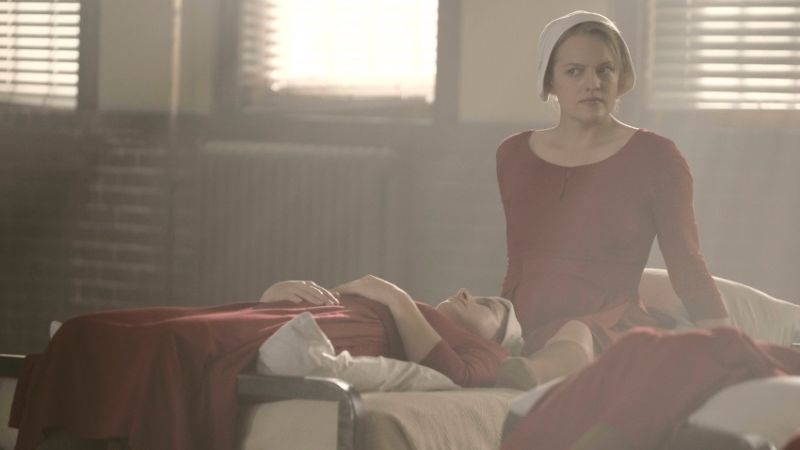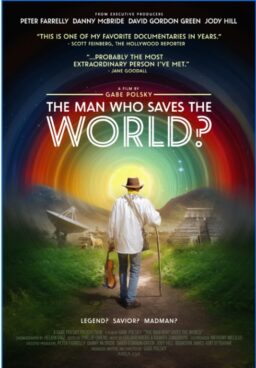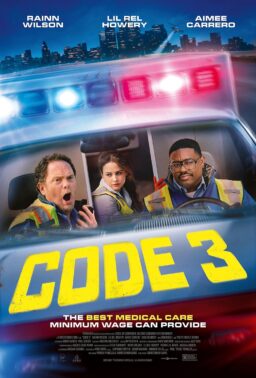1.
“Maria Dragus on ‘Graduation’ and ‘The White Ribbon’“: At Indie Outlook, I interview the acclaimed actress about her unforgettable collaborations with Cristian Mungiu and Michael Haneke.
“[Indie Outlook:] ‘What makes your performance so mesmerizing in ‘The White Ribbon’ is how it never overtly suggests your character’s malevolent intentions, causing the audience to second-guess what’s going on in your head.’ [Maria Dragus:] ‘I was a big fan of Ulrich Mühe at that time, who has unfortunately passed away, and I acted with his widow, Susanne Lothar, in the film. The first time I came onset, I performed my first scene with her, which was a big honor. Ulrich Mühe said something that I took to heart: ‘Acting is actually not about doing anything, but doing nothing.’ I thought that was very true for my character and in general. If you enter a room as a character who wants to do something, you don’t immediately act out your thoughts, you think them first, and the audience doesn’t always see what is going on inside of you. Mr. Haneke really liked that sort of introverted, subtle performance, and that’s what I did. It’s really amazing to work with a person like Haneke because he’s so precise in everything he does. He’s always concerned with how you do something or move something, and it’s all very technical. He gives you the key points—what you have to do in the scene—and then everything else, including the emotion, is up to you to put in there. That’s an amazing opportunity for an actor because you have that safety net of a director who knows exactly what you have to do, and you have the freedom to charge it up with emotion. It was such a gift to have that film be one of my very first because I felt so relaxed. I could just let go and be the character, which was an amazing experience to have as an actor. There was a version of the script that I read that actually revealed who committed all the crimes. Having that back information gave me the option of playing each scene differently. Our acting coach, Markus Schleinzer, helped us a lot. He learned the lines with us, and helped us rehearse for the film. Haneke is not a big rehearser, but it was important for me and the other kids to have a bit of training, because we were only beginners.’”
2.

“Remembering Phyllis Diller (and 52,569 of her jokes) at the Smithsonian“: Another excellent article from Donald Liebenson at The Los Angeles Times.
“Diller, who passed away in 2012 at the age of 95, helped shatter stand-up comedy’s glass ceiling. In 1955 at the age of 37, the Alameda, Calif., mother of five made her nightclub debut at San Francisco’s famed Purple Onion. In 1958, she made her television debut opposite Groucho Marx on the game show, ‘You Bet Your Life.’ But her legacy, beyond her jokes, according to comic Roseanne, was that Diller broke the mold and paved the way for the next generation of female stand-up comics. ‘Phyllis Diller‘s jokes belong in the Smithsonian as sure as artifacts from Thomas Edison’s and Alexander Graham Bell’s labs,’ she shared in an email. ‘She was that much of an innovator in her field, and, in fact, she damn near invented her field! She took a jackhammer to the stereotypes that women were told to emulate. Phyllis, onstage, was a flaming horror in the kitchen, a nightmare of a wife, a fashion flop who thought every day was Halloween and, best of all, she looked herself and the real world in the eye, laughed her head off and got us to join in. She said, ‘You can be free from all that.’’ She parlayed self-deprecating jokes about her looks (‘I entered a beauty contest … not only did I come in last, I got 361 get-well cards’), lack of homemaking skills (‘I’m 18 years behind in my ironing’) and her husband ‘Fang’ (‘I’ve been asked to say a couple of words about my husband; how about short and cheap?’) into headliner status in the country’s top comedy rooms.”
3.

“Digital love: why cinema can’t get enough of cyberpunk“: According to The Guardian‘s Joseph Walsh.
“Code streams across a computer screen; hackers bark at each other in techno-jargon and hammer at keyboards; the real world seamlessly shifts into the virtual, and back again. This is the sort of scene that is instantly recognisable as a cyberpunk film, the subgenre of sci-fi that meshes together technology and counterculture – of which ‘Ghost in the Shell,’ the live-action remake of the Japanese anime classic, is the latest high-profile example. It is little surprise that cyberpunk has proved irresistible for many film-makers over the decades since the term was coined, by the author Bruce Bethke, in the early 1980s. With its visions of postapocalyptic futures, advanced technologies and virtual realms, they get to pack their films with visual effects to sweeten the (red) pill, while wrestling with weighty existential themes.Yet, for all its enduring popularity – which owes so much to Ridley Scott’s 1982 classic ‘Blade Runner’ – cyberpunk has often proved a tough nut to crack on the big screen. Even the author William Gibson, a founding father of the genre on the page, struggled to bring its dystopian charms to the cinema. Gibson’s first significant foray into film came in 1995 with ‘Johnny Mnemonic’ – an adaptation of his short story about a data courier with a chip implanted in his head – and was an confused and poorly received flop, even if it did feature psychic dolphins. Gibson described the film as ‘two animals in one skin … constantly pulling in multiple directions.’”
4.

“Adam Sandler’s ‘Carte Blanche’ Freedom and the Joy of ‘Sandy Wexler’“: An alternative view from The Talkhouse‘s Jim Hemphill.
“Like most of Sandler’s movies, ‘Sandy Wexler’ is jammed to the hilt with supporting players and asides, but they feel more organic here than in some of his other films thanks to the premise (which justifies digressions involving Wexler’s many clients and contacts) and to director Steve Brill’s firm tonal grasp on the material. Brill has long been an underrated comic filmmaker. His debut film, the Apatow-scripted ‘Heavyweights,’ is one of the funniest movies ever made; a summer camp movie with a balance between cruelty and heart that Brill would later refine on several Sandler pictures as well as 2014’s very entertaining ‘Walk of Shame.’ (Interesting trivia: Brill also played the barfly who harasses Andie MacDowell in ‘sex, lies, and videotape’). Here, he sustains the comic energy of Sandler, Dan Bulla, and Paul Sado’s script for over two hours with unforced but expressive compositions and cutting – not to mention the most elegant lighting in any Sandler film, courtesy of Oscar-winning cinematographer Dean Semler (‘Dances With Wolves’). Semler has been part of the Sandler family since the beginning of the Netflix deal, which brings me back to the ‘carte blanche’ idea. ‘Sandy Wexler’ is set in the 1990s, and the evocation of period is extraordinary. If, like me, you lived in L.A. at the time the movie takes place, you can’t help but be awed by how right Brill and his team get every single detail; from the recreation of Tower Records and the myriad cultural references to the layered sound design, in which L.A. disc jockeys and other touchstones of the period can be heard wafting in and out of the background.”
5.

“10 Real Laws Straight Out of ‘The Handmaid’s Tale’“: A must-read report from io9‘s Beth Sampson.
“The court ruling for Roe v. Wade in 1973 ensured that millions of American women had the right to pursue safe and legal abortions. Some conservative groups and lobbies have spent years trying to backtrack this landmark decision. Honestly, they are too many to count, including letting husbands sue to block abortions, or forcibly closing Planned Parenthoods because the hallways were too narrow. One of them comes out of Indiana, signed by none other than current Vice President Mike Pence. Last year, Pence (as governor) signed a law ‘with a prayer’ that demanded all aborted or miscarried fetuses get buried or cremated—which has been criticized for doing nothing except mentally torturing the women affected. The law is now shared with Texas and Louisiana, though they’ve had trouble enacting it thanks to hold-ups in court. Indiana is also the second state in the country to ban abortion in cases where a fetal birth defect was discovered. Some states, like Arizona, even let doctors lie to a woman if a defect is found to reduce the risk of her wanting an abortion. (Side note: Under the new AHCA, if that birth defect was any of these conditions, the baby would have a pre-existing condition, meaning they could face a lifetime of higher insurance premiums.) But that’s not enough, apparently. In January, Indiana representative Curt Nisly filed an outright ‘Protection at Conception’ bill that would make all abortions illegal, leaving criminal charges up to county prosecutors. This isn’t anything new—these bills often get filed to appease groups or lobbyists. But, there’s one big difference now… Roe v. Wade is in danger.”
Image of the Day

This essential episode of The Cinephiliacs features a conversation between Peter Labuza, Jake Mulligan and Willow Maclay about the late Jonathan Demme.
Video of the Day
Doug Walker, a.k.a the Nostalgia Critic of ChannelAwesome.com, unearths another hilariously bizarre curiosity well worth seeking out: Gisaburô Sugii’s 1974 animated retelling of “Jack and the Beanstalk.”












